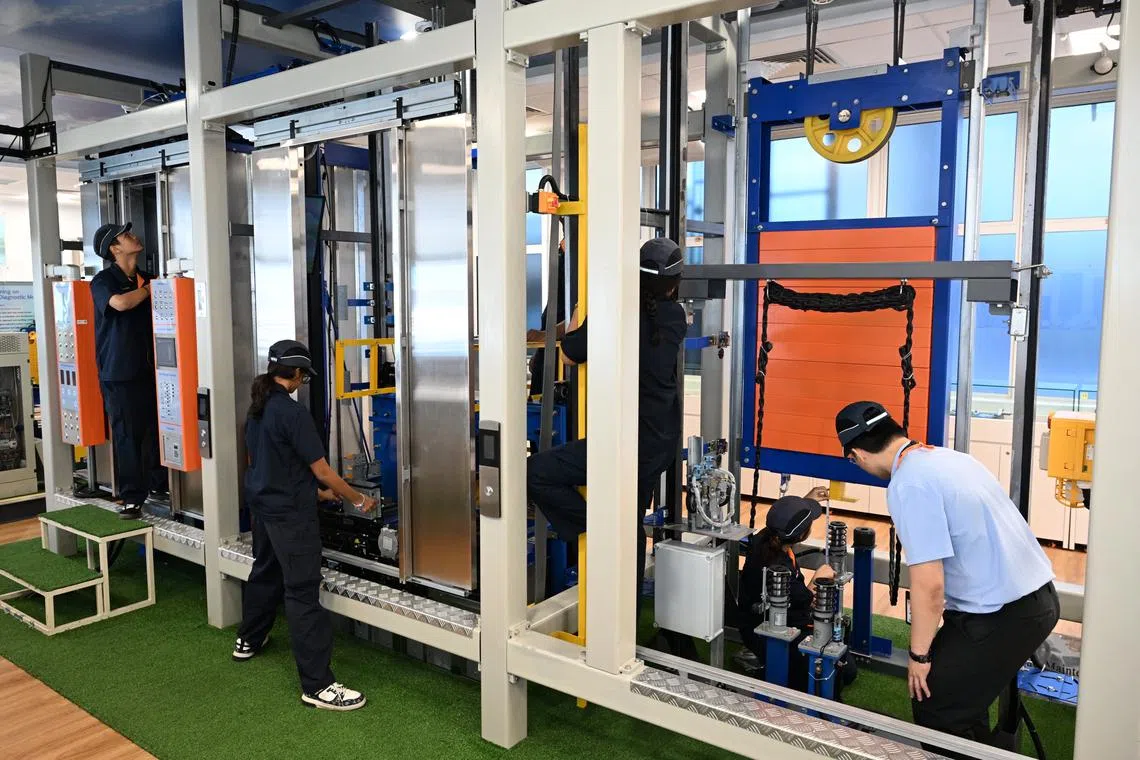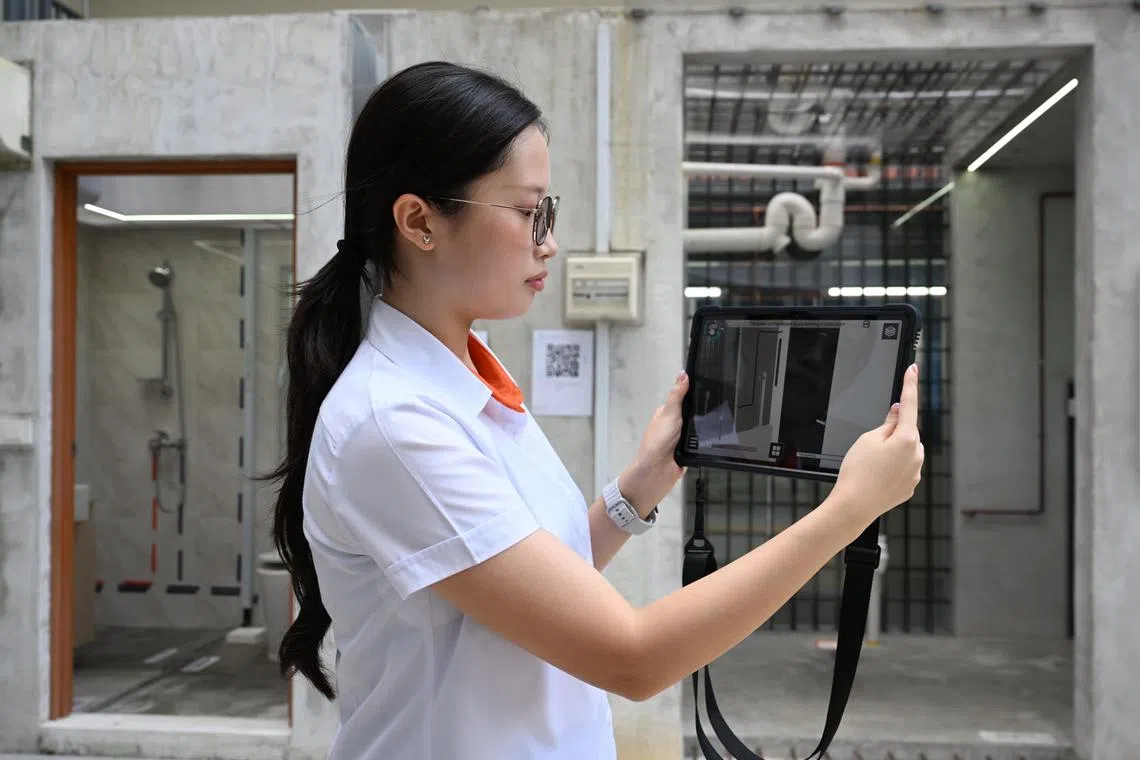New ITE facility with mock-ups, simulations to train built environment students
Sign up now: Get ST's newsletters delivered to your inbox

Spanning over 2,000 sq m, the Sustainable Built Environment Hub is the first of its kind and will help students hone their digital and technical skills.
ST PHOTO: CHONG JUN LIANG
Follow topic:
SINGAPORE – A new facility at ITE College East will train students in architecture, engineering and construction courses by simulating work environments they will encounter in the real world.
Spanning over 2,000 sq m, the Sustainable Built Environment Hub is the first of its kind and will help students hone their digital and technical skills, ITE said on Aug 19.
The built environment industry has been moving towards incorporating sustainable practices and technology to minimise environmental impacts during construction.
For instance, a mock-up home in the facility has prefabricated modules of a kitchen and bathroom that might be used to teach students design for manufacturing and assembly.
Design for manufacturing and assembly is a way of prefabricating structures at an off-site facility before assembling them on-site in a Lego-like manner, saving time and manpower. This method, which is used to build Housing Board flats, is more sustainable as it minimises the use of resources and reduces waste.
The facility also has simulated lift and escalator systems that allow students to learn to troubleshoot problems and practise on the models in a safe environment.
ITE said more than 1,500 students from its built environment courses will train at the facility each year as part of their curriculum and project work.
These courses include the work-study diploma in mechanical and electrical services supervision, technical engineer diploma in civil and structural engineering, and Higher Nitec in facilities management and engineering.
ITE chief executive Low Khah Gek said it aims to nurture a future-ready workforce for the built environment sector that can drive innovation and sustainability.
“By integrating the latest industry technologies into our training, we are preparing our students to meet the evolving demands of this fast-changing sector and contribute meaningfully to a greener, smarter built environment,” she said.
Building and Construction Authority CEO Kelvin Wong, who attended the launch of the facility on Aug 19, said the hub will be a focal point for sustainability-related skills training.
Singapore has made good progress in achieving its targets under the Singapore Green Building Masterplan, he said. One target is to green 80 per cent of buildings by gross floor area by 2030, and this has been achieved in 61 per cent of buildings as at 2024.
Mr Wong added: “But to achieve these targets, our building professionals must be equipped with the skills and tools to steward our sustainability efforts.”

The facility boasts simulated lift and escalator systems that allow students to learn to troubleshoot problems and practise on the models in a safe environment.
ST PHOTO: CHONG JUN LIANG
ITE’s new facility will allow students to have hands-on experience in managing building operations and sustainability performance, he said.
In his speech, Mr Wong also said the built environment sector has made significant progress in adopting new technologies over the past few years.
More new developments have adopted the use of integrated digital delivery (IDD), rising to nearly 70 per cent at present, from 45 per cent in 2022.
IDD is the use of digital tools to integrate work processes and connect stakeholders working on a project throughout its construction and life cycle, allowing design conflicts to be resolved early on in the building process.
Mr Wong said students and practitioners should be well versed in the latest IDD software solutions as it becomes more mainstream.
He pointed to a memorandum of understanding signed by ITE and Trimble Solutions, an IDD software solutions provider, to enhance the teaching and learning of such software in the school’s built environment and design courses.
“This is another example of how collaboration between ITE and industry can strengthen our education and skills acquisition,” he added.

Second-year student Chow Qian Tong using the Trimble SiteVision app during a demonstration in the Sustainable Built Environment Hub at ITE College East.
ST PHOTO: CHONG JUN LIANG
Second-year student Chow Qian Tong, who is pursuing a Higher Nitec in civil and structural engineering design, said she learnt to use a programme that allows her to spot errors in the mock-up unit at the facility.
For example, if a pipe is wrongly placed, this can be rectified before the prefab modules are mass-produced and brought on-site for assembly.
“Instead of using 2D drawings and being on-site, the app helps us to visualise the real site in a safe environment,” said the 20-year-old.

